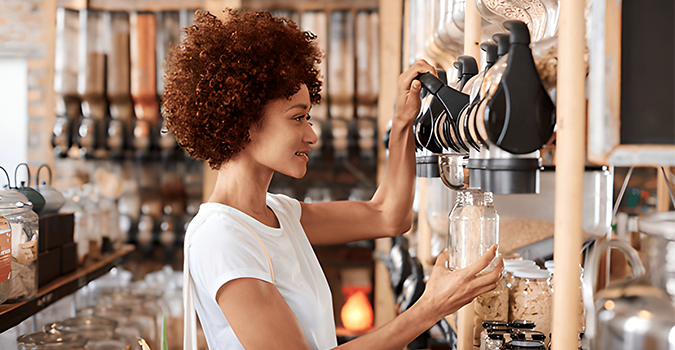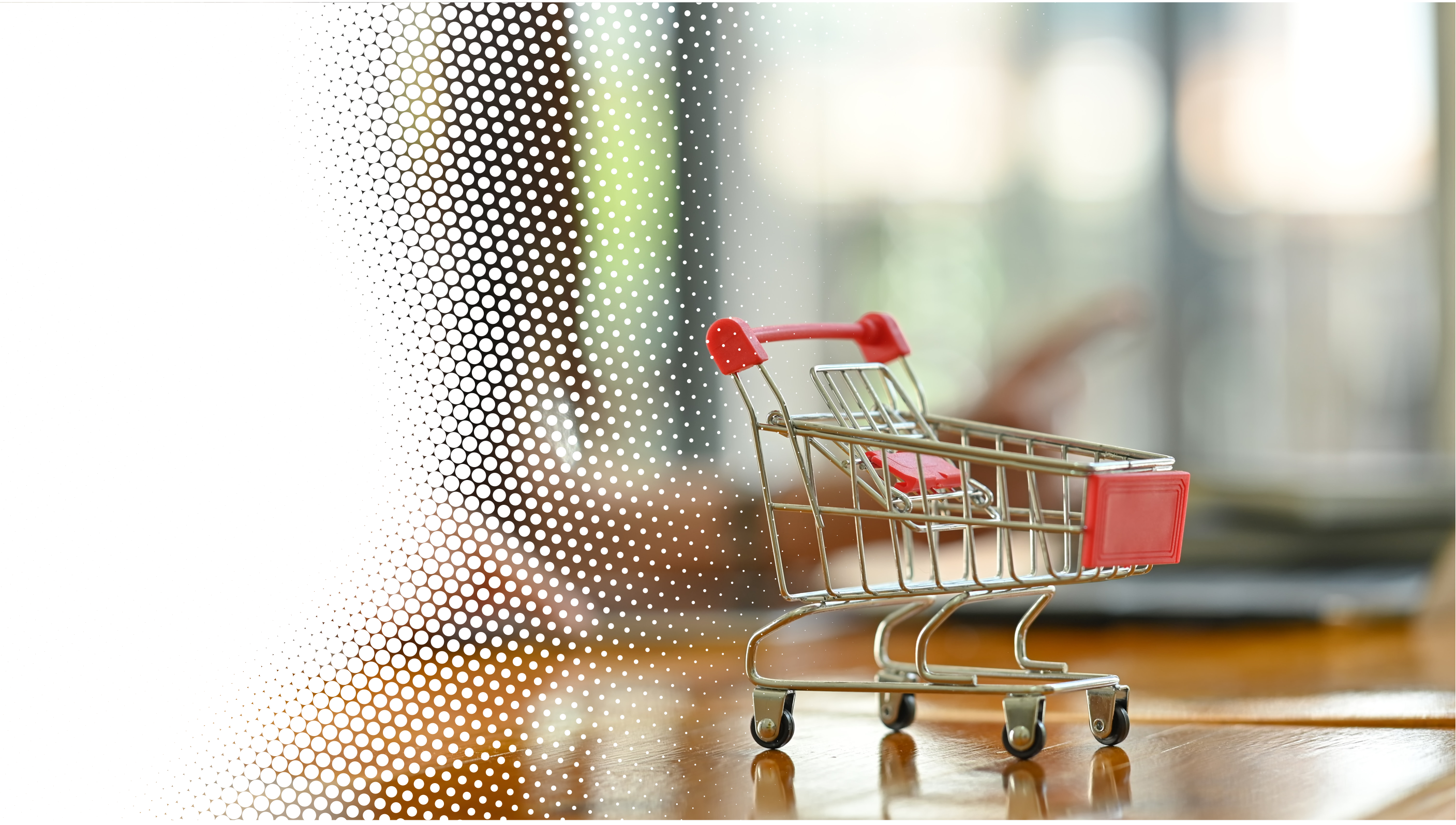Consumers are worried about sustainability. With the high-profile COP26, the release of the recent IPCC climate change report, and regular news stories with climate warnings from scientists, the urgent need for action can’t be ignored. And consumers are changing their behaviors to help. 32% are adopting more sustainable lifestyles, and 28% have stopped buying certain products due to ethical or environmental concerns.
When it comes to sustainability around food, 74% of consumers are interested in buying products that come in refillable packaging, and shops are responding. In the UK, Waitrose, Ocado, Morrisons, and Marks & Spencer have joined a refillable grocery partnership to roll out unpackaged options to customers in-store and online.
But consumer sentiment isn’t the only reason shops are changing how they sell food. Governments are changing regulations, too. The French parliament has passed an environmental bill that requires retailers to phase out disposable plastic packaging and dedicate a fifth of their stores to dry food products customers can buy using their reusable containers.
If you’re looking to build a food refill solution, our research will give you a head start to understand the latest food refill trends and avoid the barriers shoppers are facing.
Running Research with Early Adopters
We ran some qualitative research with consumers in the UK who use food refill stations. These consumers are early adopters and a big driver for their actions is a shared sense of pride in what they’re doing. They believe this is the future of grocery shopping and share their journey with family and friends. There’s a real sense of community in their actions, and shopping in this way makes them feel like they're making a difference, especially at small retailers.
We wanted to explore the barriers they face when food shopping, specifically. We spotted 5 food refill trends based on the shopper, product, and packaging:
1. It Can Be Overwhelming
Even consumers who regularly use food refill facilities find it tricky. That’s because the process can vary from shop to shop.
Will I be charged for my item by weight or volume? What if I forget my container? Do I write down how much I’ve weighed out or will I get a label? These are all common questions a consumer might ask.
To answer these queries and reassure consumers, staff should be hands-on and offer help along the customer’s journey. This can be more difficult in larger shops like supermarkets. Small zero-waste shops are likely to sell less and have a smaller store footprint, so are more equipped to provide support.
Consumers can also become overwhelmed and feel put off if the refill area isn’t presentable. They expect the store to take care of the refill section so it makes a good impression on shoppers every time they visit. That means keeping it tidy, clean, and well-stocked.
2. It Takes Effort
It’s far more difficult to bring containers from home, fill them, and weigh them than it is to pick something off a shelf and put it into a basket. Add cramped aisles and confusing placements to the equation, and consumers have a dissatisfying refill experience. Some have even adopted strategies like shopping at quieter times to avoid feeling rushed.
Our research revealed that consumers can be confused by when products are positioned by illogically. If the store chooses to create a dedicated refill section, it creates scenarios where consumers see dried fruits next to laundry products. This is unappealing and can make shopping more difficult.
Our research also found that some refill jars are positioned out of reach on high shelves or sealed so they can’t access produce.
Food refills must be accessible and logically positioned to reduce the number of barriers consumers face.
3. Packaging Adds Complexity
As early adopters of refill shopping, our research participants are keen to waste less and help the environment. But they’re not perfect and sometimes forget their containers. When this happens, they don’t always find alternatives available in-store. And those that are may contain plastic, or be ill-suited to the dispenser. For example, the opening is too small or at an awkward angle which causes spillage.
These challenges can lead to frustration and cause eco-friendly consumers to doubt the retailer's credentials for not providing glass, cardboard, or similarly sustainable containers.
4. There is Little Choice
Shoppers miss having the same variety they were accustomed to before shopping more sustainably. In smaller shops, only non-branded goods are available. In larger shops, shoppers don’t have the same level of choice as non-refill items.
For existing products, they'd prefer more brands to choose from. And they would like more categories available, especially in bigger stores. Right now, they've had to adapt their habits and visit multiple stores to complete their shop. If stores expand their selection, they can get everything they need in one place, making it easier to stay committed to refills.
5. Lower prices are expected
Because there’s no packaging, shoppers expect to pay less for their refill food items. They also expect this because they’re doing something good. Behavioral science tells us that people have a reward expectation when they’re eco-friendly.
UK consumer group, Which, found that refill items are 10-15% cheaper, on average. This isn’t always the case, but when it is true, it’s not always clear to shoppers. It’s difficult to compare the price to packaged alternatives and see if it’s good value for money. Pricing needs to be more intuitive to help shoppers to make decisions.
Opportunities to Capitalize on Food Refill Trends
If you want to dig deeper into the topic, work to understand the behavior of shoppers who aren’t early adopters, too. Get inside the minds of why people don't use refill solutions and how you can change that. And think about what drives people to shop more sustainably. The more you understand, the better.
It doesn’t have to stop there, either. You can run research specific to your product, brand, and category to get more detailed insights. Beyond food refills, there’s beauty, personal care, cleaning products, and more. Consumer drivers, barriers, and behaviors will vary for each, so tailor your research. That way, when it comes to developing products, refill branding or packaging, and the product experience, you’ll set yourself up for success.






